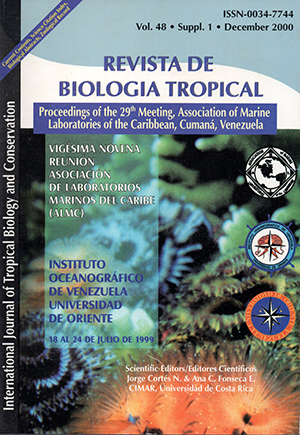Abstract
The Mexican oyster fishery, 90% supported by the coastal lagoons of the Gulf of Mexico, has decreased drastically in the last six years as a result of anthropogenic pollution and improper management. The mussel Ischadium recurvum has proliferated and competes with oysters for space and probably food. Crassostrea vírginica and Ischadium recurvum were studied to evaluate somatic production with biometry and physiological condition indices (PCI's) during an annual cycle. A random sample of 200 organisms was taken montly for each species. Condition indices wet flesh weigth: wet shell weight ratio (WFW/WSW), dry flesh weight: wet flesh weight ratio (DFW/WFW), dry flesh wet: dry shell weight ratio (DFW/DSW), an d ash free dry weight: tissue dry weight (AFDW/TDW) were calculated. In order to stablish physiological condition and temporal variability, these indices were compared between species and months. The somatic production of mussels was higher than in oysters. This enhancement in production could be explained by: 1) Mussel uses less energy for shell production, 2) a constant recruitment ofmussel almost year-round, and 3) the mesohalin lagoon was more favourable to the mussel.Comments

This work is licensed under a Creative Commons Attribution 4.0 International License.
Copyright (c) 2000 Revista de Biología Tropical
Downloads
Download data is not yet available.


